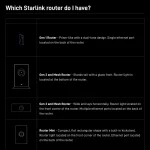SSE Enterprise Telecoms Sets Out its 2018 Predictions for UK Networks
The enterprise division of SSE Enterprise Telecoms has today set out its list of predictions for the major trends that could affect UK telecoms in 2018, which focuses on the rise of alternative network providers, greater access to fibre optic cables, more preparation for future 5G Mobile and so forth.
Naturally SSE are also keen to plug some of their own related enhancements, such as their recent deal with Thames Water (here) that has allowed them to deploy fibre optic cables within Thames Water’s waste water network in order to create new, cost-effective and diverse connections in key business areas.
Colin Sempill, MD of SSE Enterprise Telecoms, said:
“2018 will prove to be a pivotal year for progress in UK telecoms. While we may reach a positive resolution in the [Dark Fibre Access] debate, others, such as developments in 5G and rural broadband may only lay the groundwork for rollout in 2019 and beyond. But that is not to diminish the significance of the decisions and partnerships that may be formed this year, that will fundamentally prepare the UK with its digital economy ambitions in mind.
The government has been vocal about its goals. But we feel this must be supported by continued investment in creating new networks to back up these aspirations. The one constant is that new networks are a necessity in 2018 if we are to meet the demand for new connectivity for now and later.”
The operator’s predictions hold no real surprises but they’re still worth a quick skim.
Advertisement
The Predictions for 2018
* The year of new connections
In 2017, the staggered process of the DFA ruling caused significant uncertainly in UK connectivity, with implications for the way that networks will be built out in 2018. Connectivity providers have been encouraged to find alternative routes, but in order to overcome possible latency issues in congested areas, must embrace their creative competency to create new connections.
SSE Enterprise Telecoms expects that as more network is required, more will made using existing assets. It will see creative and innovative ways to deliver connectivity, such as using sewers, spare ducts, highways, overhead lines and rail networks for alternative network cabling, or physical fixed infrastructure including buildings and street furniture to reduce costs versus new digging projects, in order to bring services closer to customers, and reduce latency.
Rural broadband initiatives are also a key driver of new network demand. In December, the government confirmed universal high-speed broadband will give everyone in the UK access to speeds of at least 10Mbps by 2020. Yet delivering fibre-to-the-home goes significantly deeper than simply flicking a switch. These projects require robust infrastructure and backhaul that forms the spine of rural and to-the-premise connectivity, highlighting the continued need for investment.
* Credible alternatives challenging the status quo
It is not just the way that networks will be created that will take on a different complexion in 2018, but also who is responsible for building them. In November 2017, Vodafone and CityFibre announced a long-term strategic partnership to bring ultrafast Gigabit-capable full fibre broadband to up to five million UK homes and businesses by 2025.
Such deals are symptomatic of the vast costs and resources required to create new networks from scratch, with operators (often rivals) opting for network deals with other companies to mutually benefit from cost-savings, technical abilities and new customers.
The UK government has also alluded to the need to “continue to create conditions that encourage investment in the UK’s digital infrastructure” and spoken of its aim of “encouraging the market towards ubiquitous ultrafast services”.
But the government must also recognise the need to invest in building out networks in a way more attractive to alternative providers other than national incumbents. This goes to highlight the increase in joint ventures that we will see in the UK in 2018 with the aim of solving key challenges relating to the digital economy.
* A smarter grid needs a smarter network
Developments in the energy sector will also have a profound impact on the need for intelligent, future-proofed telecoms networks in 2018.
In line with government initiatives there is an increased move towards a greater decentralisation of energy production, with consumers beginning to engage proactively in the market with the introduction of smart grids and smart meters in the home. The changes in the way that electricity is being produced and consumed are having profound implications for energy providers’ networks and the energy markets that support the system.
To cost efficiently manage decarbonisation of the energy system, a smarter, flexible approach needs to be developed. Many homes will evolve to support ‘connected living’, equipped with smart appliances, smart heating and lighting systems and with access to smart electric meters. But underpinning this must be a solid network infrastructure that is capable of allowing the consumer’s home to interact with the smart grid.
In other words, telecoms networks are the mechanism through which the UK’s smart, low-carbon future must be managed in 2018 and beyond.
* The 5G spectrum debate continues
The investment required to enable 5G is too great for individual operators to shoulder alone, therefore the market will see alternative infrastructure aggregators emerge – building for multiple service providers and providing a genuine alternative to traditional wholesalers.
The Digital Economy Act 2017 introduced a new power for the Secretary of State to designate a statement setting out the Government’s strategic priorities relating to telecommunications and the management of the radio spectrum, with big implications for 5G. 2018 will be a potentially pivotal year for developing a future-focused spectrum policy to help ensure that spectrum is allocated in a way that supports the Government’s mobile ambitions to be a world leader.
The Government wants Ofcom to complete the licensing of spectrum bands as soon as possible. SSE Enterprise Telecoms sees a possibility that the government may licence spectrum in a way that enables pure-play service providers to take a stake beyond traditional operators.
* SD-WAN hits the mainstream
Much like how it took several years for business to ‘get cloud’, 2018 will prove to be a pivotal year for the adoption of SD-WAN. As the legacy gap widens, and more and more demands are placed on ageing networks, all things ‘software-defined’ will come to the fore.
With a software-based approach, networks can be operated using several means of connectivity – be it using the public internet, Ethernet or optical solutions. SD-WAN is becoming increasingly attractive as it means enterprises are only obligated to pay for the level of service and assurance they require. It is the flexibility of SD-WAN, and ability to manage the network estate in one place without lengthy legacy contracts that will drive adoption.
A more detailed explanation of their thinking is available here.
Mark is a professional technology writer, IT consultant and computer engineer from Dorset (England), he also founded ISPreview in 1999 and enjoys analysing the latest telecoms and broadband developments. Find me on X (Twitter), Mastodon, Facebook, BlueSky, Threads.net and Linkedin.
« CMA Stall 21st Century Fox Takeover of Sky as NOT in the Public Interest


















































Comments are closed